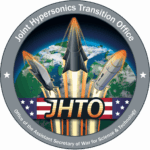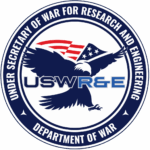The 2025 UCAH Design Competition is focused on an unpowered, high lift-to-drag, hypersonic projectile for low altitude operation. The winning concept will be eligible for ground-based gun-launched flight experiments with the Army Research Laboratory and/or wind tunnel tests within the 48-inch LENS Tunnel at CUBRC. The competition is open to all UCAH membership universities. Formal classroom design teams (e.g., senior capstone) and university club organization are encouraged to participate. Multi-university teams are allowed. Although not required for participation in the competition, the UCAH website provides contact information for potential industry and national laboratory members of UCAH to serve as advisors. Faculty, student, and industry advisors must also be approved participants within UCAH.
I. COMPETITION RULES
All UCAH member universities and participants are eligible and encouraged to participate. If you are not a member or participant in UCAH and wish to join, see https://hypersonics.tamu.edu/membership/. The key dates for participation are listed in Table 1.
Table 1 Key Dates
MILESTONE
DEADLINE
Project Announcement
28 March 2025
Q&A Webinar
18 April 2025
University Notice of Intent
31 July 2025
Student Request to Participate in UCAH
01 September 2025
Design Report Submission
10 December 2025
Selection of Semifinalists*
05 January 2026
Presentation Semifinalists
12-16 January 2026
Announcement of Winners
19 January 2026
Fabrication of Test Articles (5 weeks)
06 March 2026 (Bring to STE)
Hypersonic Wind Tunnel Test (CUBRC)
Spring/Summer 2026
Gun Launch Flight Test (ARL)
Spring/Summer 2026
Team Presentations – 2026 UCAH Forum
July/August 2026
*Virtual Presentation to Review Panel
To be eligible for the competition, a notice of intent (NOI) is required with a list of faculty advisors. Students
are encouraged to submit a request to join UCAH as soon as possible, near the beginning of the semester, to be eligible to participate in the subsequent wind tunnel or flight test activities. Reviews can take up to 60 days for processing. External UCAH industry and national laboratory advisors must also be approved participants in UCAH and must disclosed to TEES prior to their participation on the project. University design teams, including 1 or 2 semester senior capstone design courses or university club organizations are encouraged to participate. Universities may have additional requirements to meet curriculum requirements for graduation. The submitted designs must be the work of the students, but guidance may be provided by a faculty advisor, which should be acknowledged. The recommended maximum team size is 15. The top design teams will be acknowledged at UCAH Technology Exchange and Forum events. Universities may submit multiple designs.
II. MISSION REQUIREMENTS – UNPOWERED LOW-ALTITUDE PROJECTILE
(Updates made 10 September 2025 – indicated in bold below)
Maneuvering a projectile at hypersonic flight conditions (M = 5 – 8) at low altitude operation introduces many design challenges, such as high heat flux and large mechanical loads. Through modern simulation and design tools, it may be possible to design highly maneuverable hypersonic systems for low altitude operation that can be economically manufactured using modern fabrication technologies, such as additive manufacturing. The goal of this project is to explore the design space, identify an optimal set of system specifications that optimize a free flying (unpowered) system for range and affordable manufacturability – and then design a concept that optimally achieves the specifications. The project will entail geometry/configuration definition using a CAD system, discipline analysis such as aerodynamics, aerothermal, structural sizing, mass properties, stability & control, and conclude with vehicle sizing to meet mission requirements. The projectile will be launched at speed from an independent source. Hence, on board propulsion is not required. Also, it can be assumed that flight control can be achieved through aerodynamic surfaces, reaction control jets, or a combination thereof. The requirements for the design include:
- Mach: 5 – 8
- The vehicle must be aerodynamically stable in all 3 axes and trim must be demonstrated in the pitch axis across its operational Mach and angle of attack ranges. Trim must be included in the vehicle drag build up.
- The vehicle should be optimized for maximum range and affordable manufacturing (minimum cost).
- Max length: 1.0 m
- Max Diameter: 0.2 m (including all appendages such as wings, fins and tails)
- The vehicle maximum (ceiling) altitude is 9 km.
- The vehicle must be able to maneuver at a g-load of at least 15 at the 9 km altitude ceiling.
- Max mass: 45 kg, Payload mass: 9.0 kg (cylinder: 0.161 m long with a diameter of 0.0640 m). Total mass must consider structure, thermal protection, payload, avionics, power and control actuation.
- Demonstrate that all vehicle structural components will survive thermal loading from launch to ground impact.
- The vehicle must be thermal protected, so that maximum internal temperature at ground impact will not exceed 74 degree C.
- The vehicle sea level ground impact speed must be Mach 2 or greater.
- Minimum Maneuverability: 15g turn
- Minimum Volume Efficiency (h= V2/3/Splanform) ≥ 0.12
To validate the design, students will use CFD analysis to assess aerodynamic forces and moments predicted using engineering methods and will verify mission performance using flight trajectory analysis and optimization with inputs derived from discipline analyses. Teams may also perform wind tunnel tests at their university.
III. PRIZE
Winning concepts will be manufactured by JHTO for further testing. Ground-based, gun-launched flight experiments will be performed by the Army Research Laboratory (ARL) and wind tunnel testing will be performed by CUBRC in the 48-inch Large Energy National Shock LENS Tunnel. The logistical arrangement for both tests will be accomplished by JHTO, TEES, ARL, CUBRC, and the winning teams. UCAH may provide a travel stipend to support testing or data reviews, pending funding availability.
IV. DELIVERABLES
The Design Report should be submitted in pdf format to [email protected]. No more than 25 (total) single-spaced typewritten pages (11 pt Times font, including graphs, drawings, photographs, and appendices) on 8.5” x 11” paper. Larger (11” x 17” max) CAD schematics are allowed/encouraged.
The following is a list of information should be included in the final report.
- Requirements Definition – Summarize the mission and design requirements of the vehicle system
- Concept of Operation – Demonstrate vehicle design meets mission requirements
- Trade Studies – Describe how trades studies leading to final design (pro and cons)
- Design and Fabrication – Discuss the design, integration, and manufacturing concepts for all subsystems: aerodynamics, stability and control, structures, thermal loading, and vehicle sizing.
- Methods and Tools – The report must clearly describe all tools and methods utilized for the system and subsystem design and provide brief description of the inputs, outputs, and assumptions for the design. A discussion on the validation of the tools and methods must be included.
- Mission Summary – A summary table of resource requirements should be included.
- Test and instrumentation plan for gun launch and wind tunnel experiments.
- CAD drawings of wind tunnel and gun launch test articles (not included in the 25-page limit).
- A concise, 2-page “Executive Summary” must be included (not included in the 2-page limit).
- Bibliography with all references should be included at the end.
V. EVALUATION CRITERIA
JHTO intends to select up to three winning teams. The team reports will be evaluated on the quality of the following: (i) technical design including approach, analyses, and trade studies, (ii) concept of operation, (iii) manufacturability/cost analysis, (iv) test and instrumentation plans, and (v) final report.
VI. CONTACT
Questions should be submitted to [email protected]


